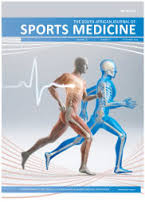Comparing cardiorespiratory fitness and physical activity levels between third- and fifth-year medical students in a South African university
DOI:
https://doi.org/10.17159/2078-516X/2024/v36i1a15245Abstract
Background: Cardiovascular disease (CVD) risk factors such as sedentary behaviour, decreased physical activity (PA), and low cardiorespiratory fitness lead to an increased and accelerated risk of cardiovascular disease and mortality. Medical students tend to adopt sedentary lifestyles due to a demanding curriculum. This may have a negative effect on CVD risk factors and cardiorespiratory fitness levels of medical students.
Objectives: To compare physical activity and cardiorespiratory fitness levels in a cohort of third- and fifth-year undergraduate medical students in a South African university.
Methods: Data from 123 third-year and 139 fifth-year medical students in the Graduate Entry Medical Programme (GEMP) at the Faculty of Health Sciences, University of the Witwatersrand, were collected. Measurements included CVD risk factors, height, weight, blood pressure, waist circumference, cardiorespiratory fitness, physical activity vital signs and pre-participation health screening questionnaires. Descriptive statistics were presented as mean ± standard deviation or median [interquartile range] depending whether the data were normally distributed or not.
Results: Both groups had low cardiorespiratory fitness when compared to norm values (GEMPI VO2 peak was 29.1 ± 5.9 ml.kg-1.min-1 and GEMPIII VO2 peak was 30.0[11.0] ml.kg-1.min-1). Most participants did not meet WHO physical activity requirements (GEMP I: 72%; GEMP III: 78%). There were significant differences in BMI (p=0.046), diastolic blood pressure (p=0.034) and VO2 peak (p=0.00001) between students meeting and not meeting WHO physical activity requirements (p<0.05).
Conclusion: Third- and fifth-year medical students at a South African university fail to meet recommended WHO physical activity levels and are below cardiorespiratory fitness norms. Therefore, medical institutions should promote and implement targeted physical activity interventions to reduce the prevalence of low fitness levels and the associated health hazards among their students.
Downloads
Downloads
Published
Issue
Section
License
Copyright (c) 2024 South African Journal of Sports Medicine

This work is licensed under a Creative Commons Attribution 4.0 International License.
The South African Journal of Sports Medicine reserves copyright of the material published. The work is licensed under a Creative Commons Attribution 4.0 (CC BY 4.0) International License. Material submitted for publication in the South African Journal of Sports Medicine is accepted provided it has not been published elsewhere. The South African Journal of Sports Medicine does not hold itself responsible for statements made by the authors.
How to Cite
- Abstract 756
- PDF 680





.png)